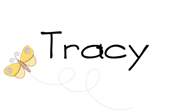Getting Started
Favorite Quote:
My favorite quote from this chapter does just that, sums up the focus necessary to help young readers succeed.
Here is where I struggle: My reading focus does not focus on the individual reader! The students just participate in the reading. This is not to say they are not learning, they just aren't goal centered so have no focus themselves! What is your favorite quote from this chapter?
Goal Setting:
Crystal asks, "How do you fit in time for conferencing and/or goal setting?" Well, this will be something new for me. I intend to use these strategies in small group guided reading, though I'm sure they will spill into Shared and Close Reading as well.I am thinking that once students are assessed and divided into small groups, I will make some time in the early weeks, while training my students on independent work and stamina, to have mini-conferences with each student to discuss and make goals for the first part of the school year. I think I will modify their reading notebooks to make them more interactive. These composition books will hold their goals and mini anchor charts that define and describe strategies so students can revisit them later, as well as include work toward that goal such as writing, vocabulary, etc. How will you make time for individual conferencing or goal setting?
Scaffolding:
Jennifer Serravallo discusses the importance of offering a variety of strategies to students but "once the reader becomes skilled, the process, the strategy, becomes automatic and something to which the reader no longer needs to give conscious attention." (p. 9)Crystal asks us to think about a temporary scaffold in our classroom and how we assure it is temporary. One thing that comes to mind is the use of manipulatives during math. I teach the students to use these when regrouping a number, but as the students internalize the understanding of the base-ten system, they no longer need those base-ten blocks. For some, the removal of the blocks takes longer than others (thus the individual differentiation), but by the end of the unit few students will still need them.
This is exemplified in the Getting Started chapter by the types of charts noted on p. 16-18 and specific feedback on p. 11 as well as what Ms. Serravallo mentions in the "Visuals" section of each strategy. All are scaffolds that, with plenty of practice, students will no longer need to access after practicing specific skills. What kind of scaffolding do you use in your class?
Goal 1: Supporting Pre-Emergent and Emergent Readers
This chapter is full of wonderful ways to support those emergent readers! As a third grade teacher many of these strategies would not be beneficial to me (but thinking back to my first grade days, wowza--TONS of stuff!). I could see several of these strategies helping with my students that are struggling readers, have IEPs, or are English Language Learners. Three of my favorites are:
1.9 Back Up, Revise
With this strategy, students are revising their reading (and thinking) to be sure what they have read makes sense. Often students read a text in one way and, even with their errors, it does make sense. Then they find inconsistencies as they continue reading. Using the prompts to have students revise their reading helps support the comprehension piece that is so essential to third grade and supports their confidence, even when the text appears to be simple to the student's peers.
1.16 What I See/What I Think
I like this strategy because again, it does not scream, "You are a below level (or emergent) reader!" to a student's peers and because it can be used for both narrative and nonfiction texts. In this strategy students make multiple connections to what they read in either the pictures or the text. Again, this allows students to monitor their reading and understanding of a text. This comprehension can support the phonics of reading words and self-correction as well.
1.19 Connect the Pages
Similar to What I See/What I Think, this strategy works with narrative or nonfiction and requires students to make connections within the text. Students here are focussing on the big idea of the text, connecting the events or information from one page to another throughout the reading.
It is easy to see myself using these strategies with my third graders that are at the emergent stage. Unfortunately, I think these would have been very helpful with one of my IEP students last year even though he was in my low reading group, the other students were much further ahead than he was. He was could have been easily been working with the same materials as the other students but in a different, more effective, way that fit his ability level! I look forward to having this resource for future students like this guy. What strategies spoke to you from this goal?
Next week we will be reading Goal 2: teaching Reading Engagement and Goal 3: Supporting Print Work. I look forward to reading your thoughts and sharing again next Tuesday.






No comments:
Post a Comment